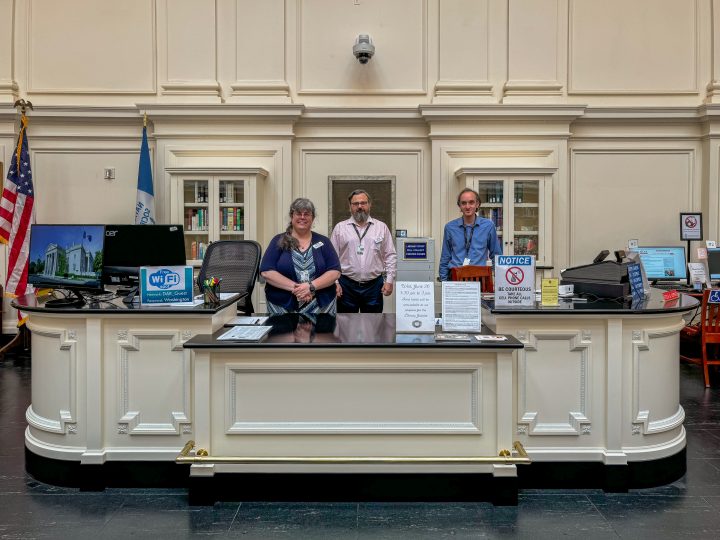TLDR: A respected furniture maker doesn’t plan for critical functions, resulting in an expensive remake.
When you design tables, the first problems to solve are simple: What is the client asking for? Is this something we can build? How would we do it, and what materials should we use? What kind of joints? What special features are required? Straightforward stuff. Then there’s another set of problems that a lot of makers simply ignore or forget to address: Aside from the primary use, what else might a client be doing with their table? How will users interact with it? What could go wrong? When a designer forgets to think about the second set of questions, critical problems can be left unsolved. Result: an unhappy customer, and a lot of money wasted.
Here’s an example. Our local Ivy League university commissioned a set of tables for one of their libraries from a well-respected furniture maker. (They lined up a private donor to pay for them.) They asked for 9 tables, all made out of solid white oak with traditional joinery, that could be removed from the room when the space is needed for other functions. The maker’s solution depended on a folding top that would allow the tables to be stored in an adjacent store room. The architect overseeing the project approved the design. The tables look very nice:
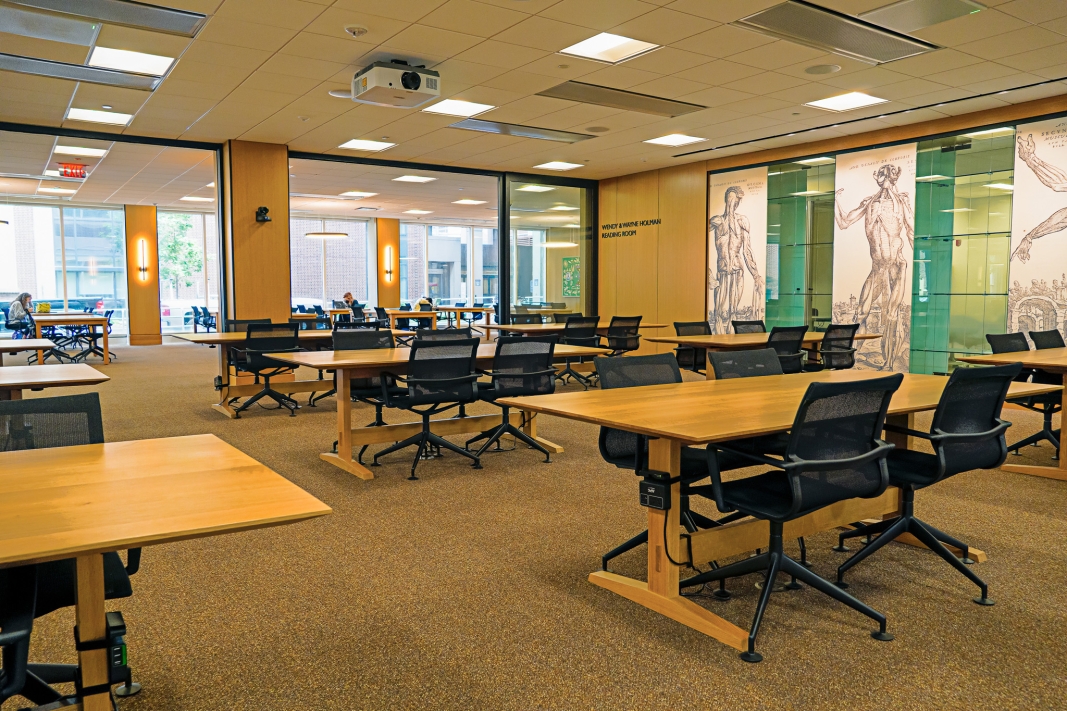
And they have a cool folding mechanism:
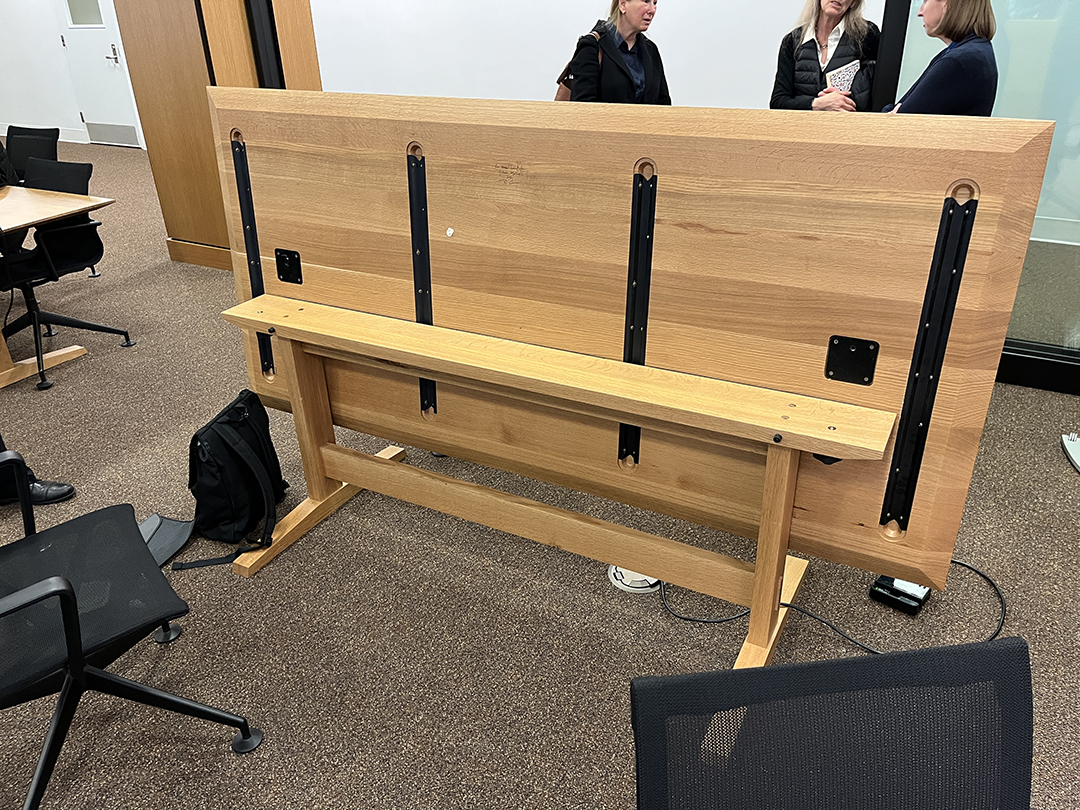
But after a year, the university staff contacted us to ask how much it would cost to replace them. Yup, they wanted to throw away $100k or so worth of beautifully made, solid oak tables. Why? It turns out that the maker forgot to solve two problems. First, they didn’t consider that students at a university, sitting at one table for hours, might want to be able to plug in their phones and laptops. If you look carefully, you can see a stop-gap solution. Library staff bought some plug blocks and velcroed them to the support structure in the table. Not convenient, and not elegant, but sort of adequate.
The second problem is more surprising. The tables need to be moved into an adjacent storage room on a regular basis. For reasons unknown, there are no wheels on the tables. The maker decided instead to provide a set of skateboard-ish dollies that could be placed under each end of the tables:
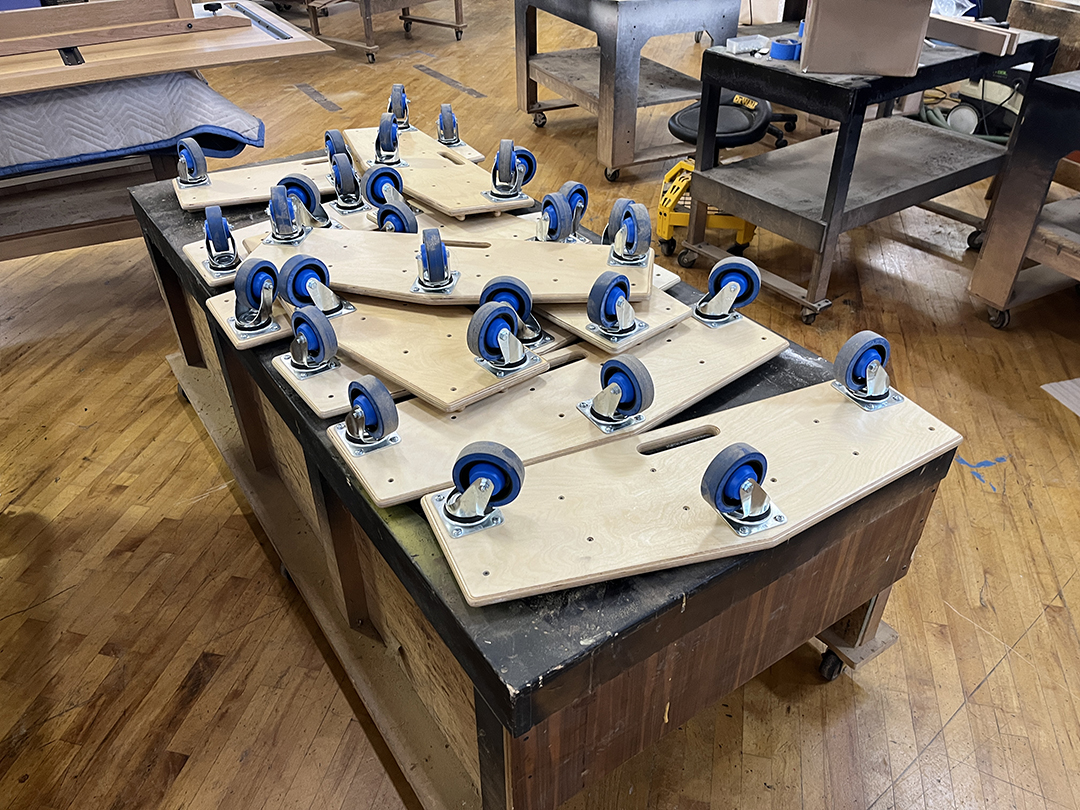
To use these, library staff need to bring them to each table, lift the 130 pound table onto them, then roll them into the storage room. And here’s where the mind-boggling mistake was revealed. The skateboards don’t fit through the door! Yup, nobody at the manufacturer checked to see whether their kludgy solution would even work. The architect missed it too.
That’s when we were called in. I asked staff to tell me what wasn’t working, and heard all about what a pain it was to move these tables, and how having wiring at only one end of the table made it hard for multiple people to work at them. I was asked for a price to replace the tables. I knew this wasn’t going to be cheap. So I suggested that we reuse the tops, and only replace the bases. This would save about half the cost of replacing the entire table. My ideas for the base were to incorporate integral casters, and to put a wire run into the center of the table terminating in a grommet on top. This would allow for staff to easily replace the plug units if at some time in the future different types of plug would be required. I showed them two styles of casters. One is very low profile but doesn’t roll so easily, and the other is very easy to roll but leaves the casters in view. Here are both designs:
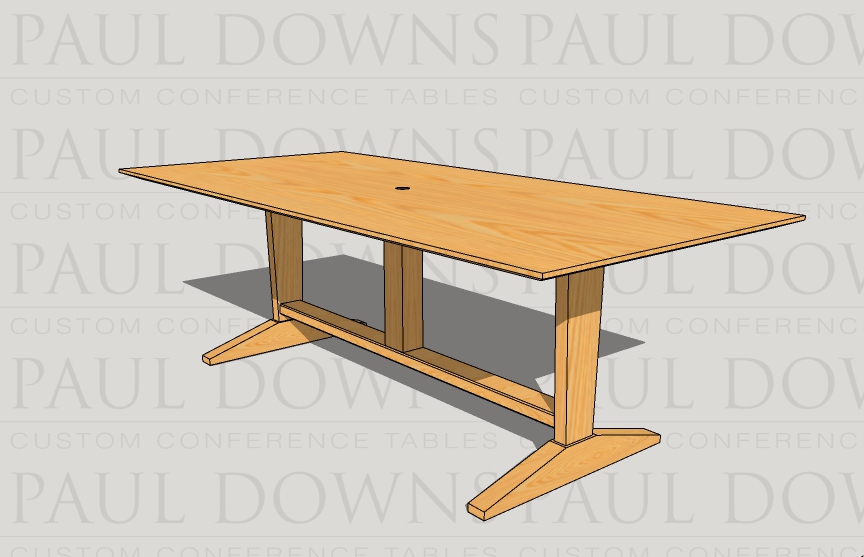
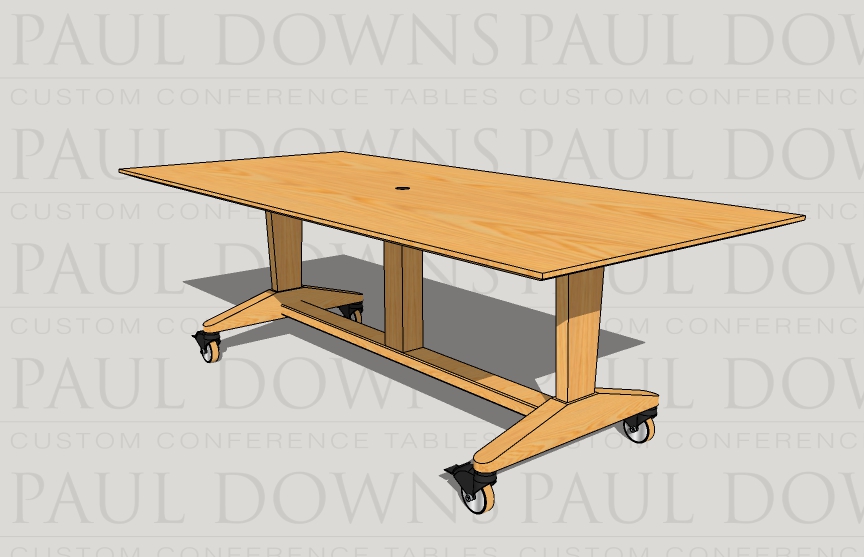
Staff chose the second option. We had the unsatisfactory tables shipped to our shop, where we fabricated the new bases, drilled holes in the existing tops for the grommet, and put everything back together:
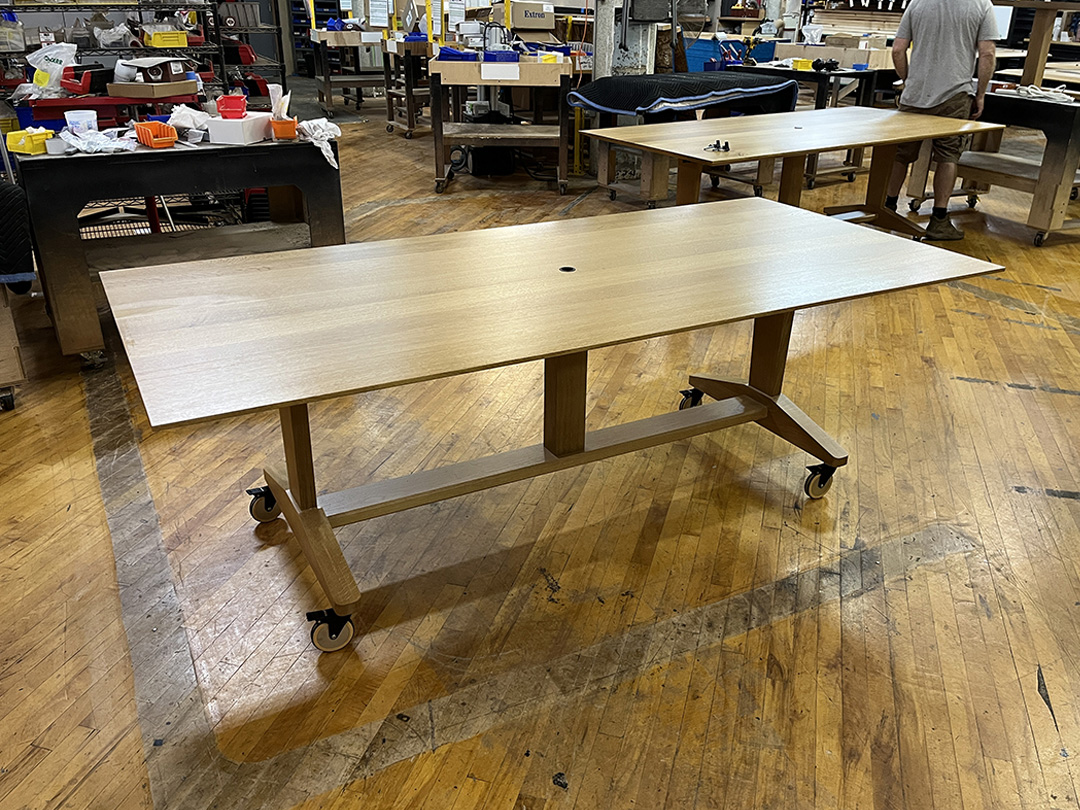

This project cost the university tens of thousands of dollars. A nice job for us, but a complete waste of money. What’s the moral of the story?
Craftsmanship is more than how you build things. It starts with thinking through a problem, and asking all of the questions required to get a complete solution.
If you don’t want to regret a poorly thought-out purchase, call us.

